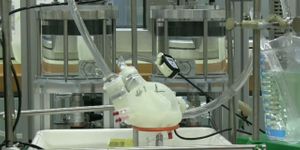Insects With Compound Eyes Can See Better Than Initially Thought
Scientists have long thought that insects with compound eye systems couldn’t see the world as clearly as animals sporting eyeballs with singular lenses. But new research indicates that this might not be the case at all.
Image Credit: Pexels/Pixabay
A study conducted by researchers from The University of Sheffield has made its way into the journal eLife and suggests that insects with compound eyes probably don't see the low-resolution, light-sensitive images we’ve been led to believe all these years. Instead, their eyesight is likely to be quite acute.
“From humans to insects, all animals with good vision, irrespective of their eye shape or design, see the world through fast saccadic eye movements and gaze fixations,” study lead author Mikko Juusola from The University of Sheffield explains.
“It has long been known that fast visual adaptation results in the world around us fading from perception unless we move our eyes to cancel this effect. On the other hand, fast eye movements should blur vision which is why it has remained an enigma how photoreceptors work with eye movements to see the world clearly.”
Related: Insects are small, but that doesn't mean their brains aren't complex
Many insects have entirely different optical systems that don’t use the traditional single-lens technique for reporting to photoreceptor cells at the back of the eye. Instead, compound eye systems work in fast and complex ways to discern high-resolution images for the brain.
Rather than moving around like a person’s eyes do, these compound eyes always point in one static direction relative to the insect’s head. Photoreceptor cells underneath the plethora of lenses move around rapidly, automatically sampling the world around the insect in saccadic bursts as the head moves around.
This sampling process happens so quickly that we can’t see it with the unaided eye. To get around that quandary, the researchers built a custom microscope with an integrated high-speed camera. They studied the compound eye systems of fruit flies up close with this device to draw their conclusion.
“Our results suggest that by adapting the way photoreceptor cells sample light information to saccadic eye movements and gaze fixations, evolution works towards optimizing the visual perception of animals” Juusola concluded.
“By using electrophysiological, optical and behavioral assays with mathematical modeling, we have demonstrated that fruit flies (Drosophila) have much better vision than scientists have believed for the past 100 years.”
Related: Do insects sleep like we do?
The study illustrates how photoreceptor cells inside of insects' compound eye systems do much more work than we ever knew, but moreover, that insects can see quite well despite popular belief.
Because the study was limited to fruit flies, additional research to find out whether other insects' compound eyes work in similar ways is underway. It should be interesting to see if there are any variances in the way eyesight works from one insect to the next.
Source: University of Sheffield









